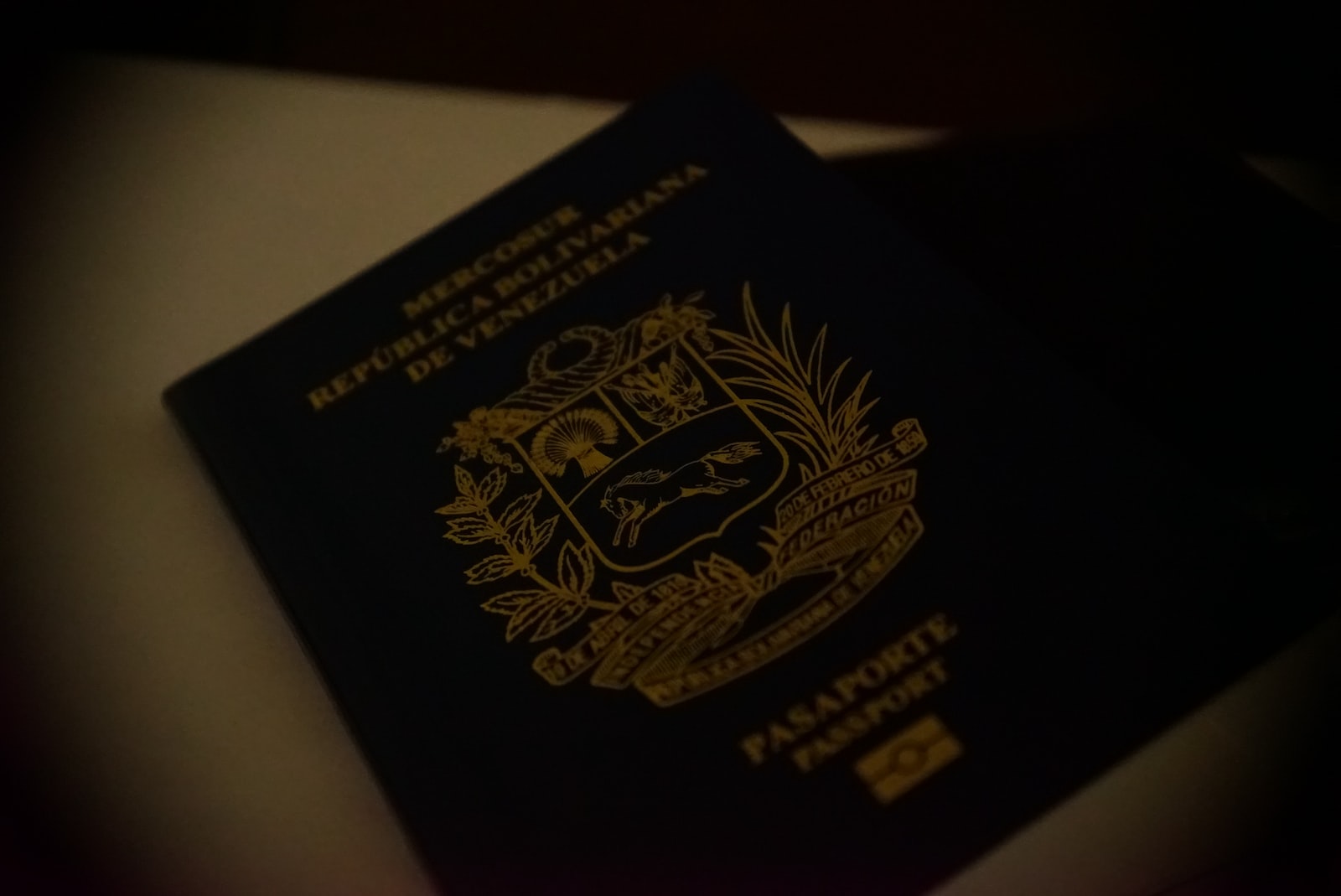Employment History on a Green Card Application
Providing an accurate record of your current and previous jobs for your green card application
- What employment history is required for a green card application?
- Employment History Requirements
- What Information Does USCIS need me to provide for each employer?
- Employment history, address history, and immigration history
- Is being a student or an intern considered employment?
- Does part-time work count as employment?
- What if I’m unemployed, retired, or a homemaker?
- Missing Information in Employment History
- Tips for Remembering Old Jobs
The Our Love Visa Experience
Our Love Visa has a simple mission. We believe it should not be difficult or expensive to bring couples together. OLV has helped thousands of couples navigate the immigration process, and it would be a privilege to help you too.
What employment history is required for a green card application?
Most of the Immigration Forms required throughout the marriage green card process ask for the employment history of the family member applying for a green card and the family member sponsoring them.
On your family-based or marriage-based green card application to be filed with USCIS, both the sponsoring family member and the applicant must provide the U.S. government with a five-year employment history. If you are applying from consular processing, i.e. a visa from outside of the U.S., you must provide every employer you’ve had for the last 10 years.
If you only worked for one or two employers during those times, it should be relatively easy to fill out these portions of your immigration applications.
Your employment history is an important part of U.S. government background checks. But what if you’ve had a number of employers and find it difficult to remember every specific one?
Do not stress! Below, we’ll go through the amount of specificity that the U.S. government often requires regarding your current and former work. We’ll also provide some useful guidance for filling in the blanks.
Employment History Requirements
Below are the employment history requirements for respective immigration forms that are required in your family-based or marriage green card application process.
IMPORTANT: Make sure to start with your most recent employer and work your way backward from there.
| Form | Whose employment history? | Years |
| Family Sponsorship Form (I-130) | Sponsoring family member (U.S. citizen or green card holder) | Past 5 years |
| Supplemental Information Form (I-130A) | Green card applicants living abroad or in the U.S. | Past 5 years |
| Green Card Application (I-485) | Green card applicant living in the U.S. | Past 5 years |
| Online Green Card Application (DS-260) | Green card applicant living abroad | Past 10 years* |
*Please be aware that if you are an Afghan citizen applying from outside of the U.S., you will be required to disclose your job history from 1995 to the present. Citizens of Iraq residing abroad are required to give their complete past job history.
What Information Does USCIS need me to provide for each employer?
I-485, I-130, and I-130A forms: For each employer during the last five years, whether they were in the U.S. or overseas, you must supply the following information:
- Employer Name
- Employer Location (addresses where you actually work(ed) or report(ed) to)
- Your job title or position
- Exact dates (month, day, and year) for when you started and ended the employment
There are a few things to be aware of: The termination/end date for your first named employer, on the I-130 and I-130A Supplement Forms, will already be set to “PRESENT. You may not edit or remove this response. If you are not presently employed, you may instead input a different kind of “employer” (see the “Specific Circumstances” section below).
If you are an Adjustment of Status applicant, meaning you are applying for a green card from within the U.S., Form I-485, does not have the same pre-set end date for your first employer. When completing this form (I-485), if you are not currently employed, you can simply provide your most recent employer information in the first section of the Employment History and include the respective end date.
If your last work outside of the United States was from more than five years ago, and not provided in the section for employment during the previous five years, the I-130A (Supplement Form to I-130, for the spouse of a U.S. Citizen or green card holder) has a section that asks about last employment abroad for the spouse applying for a green card. You must provide an explanation in the addendum (extra space at end of the Form) if you don’t indicate any overseas employment from the last five years or longer.
The DS-260 form is the online application for a family or marriage green card (immigrant relative) from outside the U.S. If you’re a family member applying for a green card/immigrant visa from outside the U.S., you should start by giving the following information about each employment you now have, whether it be overseas or in the U.S.:
- Your primary occupation (you must specify your line of work if it is not among the choices in the drop-down list)
- Employer Name
- Employment location (employer’s address where you actually work(ed) or report(ed) to)
You must also provide the following information for each prior employment you had during the preceding 10 years, whether it was overseas or in the United States:
- Phone number of the employer
- Your position title
- Manager/Supervisor’s name
- Exact dates (month, day, and year) for when you started and ended the job
In addition, you have to say:
- What kind of work do you plan to look for when you get to the U.S.
- Whether you have ever participated in any military service
If you indicated that you would want to serve in the military, you must additionally provide the following details:
- The country or area where you served
- Type of service/Branch
- your position or rank
- Your area of military expertise/experience
- Exact dates for the start and end of your service
Employment history, address history, and immigration history
To avoid USCIS demanding extra information about why the histories don’t line up, which will delay your green card application, make sure the address history correctly corresponds with the work and immigration history. You will receive a Request for Evidence from USCIS or a notice of inquiry from the Consulate. Incorrect information can also lead to a denial of your application.
If your employment history has discrepancies, you must have a legitimate explanation for why the histories don’t line up (for example, the applicant worked remotely or indicated the firm headquarters location rather than the real office address). In that case, you should explain any areas of concern or differences on the form or in the application addendum.
Is being a student or an intern considered employment?
Yes, for the purposes of your green card application, full-time enrollment in school and unpaid internships are recognized as “employment”.
You should simply enter “Student” or “Unpaid Intern” — whichever is appropriate for you — in the field designated for your employment title or profession on forms I-130, I-130A, and I-485. The employer’s name would then be listed as your school or the location of your internship. Include the location of the company or the institution, as well as the days you worked there.
You would choose “STUDENT” from the drop-down list of principal vocations on the DS-260 and provide the name and location of your institution of higher learning. If you are an unpaid intern, you should choose “OTHER” from the list of principal jobs, describe your position, and provide the location of your company. If these are your present jobs, you won’t be asked for the dates of your attendance or internship.
Does part-time work count as employment?
In fact, a part-time job is taken into account when applying for a green card. You must typically include all periods of paid work, whether part-time or full-time, including paid internships, according to U.S. federal regulations. Similar to how a full-time employee would (see “Employment History Requirements” section above), you would fill out the “Employment History” portion of your immigration applications.
What if I’m unemployed, retired, or a homemaker?
Where you would normally include the name of an employer on forms I-130, I-130A, and I-485, you would simply write “Unemployed,” “Retired,” or “Homemaker” — whatever is appropriate to you. This also applies if you were one of these during any time in the previous five years.
You would choose “NOT EMPLOYED,” “RETIRED,” or “HOMEMAKER” from the drop-down list of principal vocations on the DS-260, depending on which one best describes your current situation. You must also provide a justification for not working if you choose “NOT EMPLOYED.
Missing Information in Employment History
You’ll sign a signed declaration attesting to the accuracy of your responses towards the bottom of each form. As with all sections of your application, you should use caution while completing this section of the application. Your green card application may be delayed if your employment history has a lot of inexplicable gaps or discrepancies. Furthermore, accuracy is crucial when providing any information to the U.S. government.
Therefore, you must offer an accurate job history to the U.S. government, preferably with start and end dates that are precise. You’re not alone, however, if you have trouble recalling certain dates or former employment.
Although you should be prepared to explain any gaps in job history or ambiguous dates, it’s unlikely that your application will be rejected altogether due to minor issues. This portion of the green card application is often considered to be a bit more flexible since many applicants fail to keep accurate records of their job history.
You should still make an effort to provide a thorough and correct response to this question on your immigration paperwork. Giving false information on purpose is illegal and is referred to as “perjury” or “lying under oath.” The U.S. Department of Homeland Security has the authority to confirm the information you provide, including by paying unannounced visits to your places of work.
You may offer a range of dates and explain on the form why precise dates were not available if you are unable to recall the exact start and finish dates you worked at certain employment. However, it’s preferable to omit them if there is a space between the dates.
Below are potential outcomes you may expect on your spouse visa or green card, if you are unable to provide a complete employment history:
- Your employment history can simply be accepted as accurate and complete with no further questions;
- USCIS could issue you an official request for evidence, or RFE, asking you to update your application with a more thorough employment history
- At the time of your green card interview, they could inquire about the gaps
Tips for Remembering Old Jobs
You’re not alone if you have trouble remembering your past employment dates. But if you work hard enough, you may be able to piece together your whole employment history. To locate the information you need, use one of these methods:
Examine your CV or resume: If you’ve been in the job market in the last five or ten years, these are the locations to start looking. When assessing your job application, prospective employers often request your CV or résumé. These records often include a list of your employment history, including positions, had, employers, and dates of employment.
Request a letter of employment verification: This official letter from your employer demonstrates that you now work for them or have in the past. It has to include your employer’s name and address, your start and finish dates (if you left your job), your position, and your yearly pay.
Take a look at your tax returns: In addition to being necessary when you file your financial assistance form (I-864) to the U.S. government, your federal income tax return might be helpful for locating the names and addresses of past employers during certain filing years. Typically, the data is repeated from tax documents supplied by employers or customers, like a W-2 (Wage and Tax Statement) or 1099-MISC (Miscellaneous Income Statement). Additionally, you may ask the Internal Revenue Service for copies of your tax returns from previous years (IRS).
Requesting pay stubs or other employment records: The Social Security Administration (SSA) records the employment history of Americans. If you’ve worked in the U.S., you may submit a Request for Social Security Wages Information form to get information about all of the jobs you’ve had throughout the years you designate, including the names and addresses of your employers, the days you worked for each, and your earnings. But keep in mind that the SSA requires 120 days to complete the request and costs $115 for the information.
Stop by the state unemployment office: You may ask your state’s unemployment office for your job history if you previously worked for a company headquartered there and have claimed unemployment benefits. The record normally only dates back up to 18 months and is given out without charge.
Additional historical data via a search You may not have filed a U.S. tax return or had other official documents showing prior employment if you now reside overseas or formerly did. In this case, consider searching through old papers like previous pay stubs and employment contracts.
Obtain a report on employment statistics: Few people are aware that certain services accumulate job information on people and sell it to businesses that are interested in such information. But you also have access to that information. The Work Number, a division of credit agency Equifax that many companies use to evaluate job seekers, provides such a report upon request free of charge.
Free credit report check: Visit the government-endorsed website
AnnualCreditReport.com to get a free copy of your credit report (provided by each of the three major credit bureaus once per year). If you previously gave such information on a credit application, which the lender then reported to the credit agencies, each credit report can include a list of your current and/or prior jobs. If you didn’t, your credit reports most likely wouldn’t include any information about your job. However, because the reports are free, there is nothing to lose if you just wish to double-check.

Our Love Visa makes your immigration process easy, fast, and worry-free, guaranteed. We provide you with complementary tools and resources free that help you plan your future in the United States together. Learn about how OLV is helping couples through their immigration journey.







